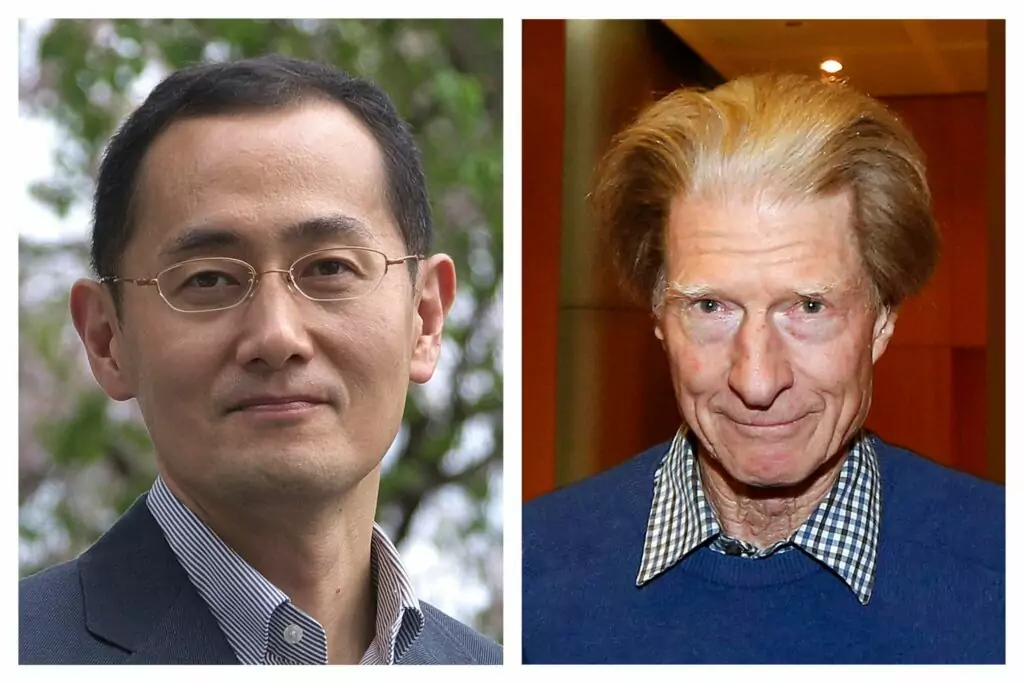A Nobel Prize in physiology or medicine is awarded to researchers who manage to make revolutionary or significant discoveries in their fields. This contributes greatly to the understanding of how organisms function and how to cure diseases previously considered non-treatable. In 2012, the Nobel Prize in physiology or medicine was awarded to two scientists: John B. Gurdon of the University of Cambridge in England, and Shinya Yamanaka of Kyoto University in Japan.

✅ AI Essay Writer ✅ AI Detector ✅ Plagchecker ✅ Paraphraser
✅ Summarizer ✅ Citation Generator
Yamanaka and Gurdon produced groundbreaking research in a controversial study of stem cells. Their experiments focused on manipulating living cells and generating so-called pluripotent stem cells (iPSCs). “They discovered that a mature, adult cell can be turned back to an infant, versatile state called a stem cell” (France-Presse, 2012). Studying stem cells, as it is expected, will cause a breakthrough in curing a wide variety of degenerative diseases. Gurdon and Yamanaka were the first scientists to prove that iPSCs could be created in a laboratory environment, rather than harvested from aborted fetuses, thus avoiding the highly controversial moral issues driving anti-abortion activists’ arguments concerning human life. Stem cell research can now be conducted without controversy, and people with a wide variety of degenerative diseases can have hope for a cure (Cook, 2012).
The research of Gurdon and Yamanaka are 40 years apart and represent many separate milestones. They did not work on this project together. Gurdon was working on cloning with tadpoles in 1962, and Yamanaka discovered how to reprogram mature human cells so that they could revert to their primitive state. Gurdon’s work demonstrated that cells contained the same genetic code and that individual cells were capable of creating an entire animal if manipulated. His work has become the basis for the cloning procedure. Yamanaka took that understanding and built his research on it. Using mouse skin cells, he returned them to an embryonic state and demonstrated how these cells could then redevelop into any part of the body (Holmes, 2012).
The two prize winners’ work has revolutionized not only the way scientists think about cells, but it has also laid the foundations for cures of many diseases. Scientists all over the world are studying cells that have been damaged, such as those damaged by Alzheimer’s and Parkinson’s diseases. They are examining each disease at the cellular level so they can understand them. Scientists are hoping to replace damaged cells with healthy ones, as well as find therapies that can help control degenerative diseases. Other physical ailments this discovery can help with are type 1 diabetes, serious spinal cord injuries, and muscular degeneration. Doctors are giving heart attack victims infusions of cardiac stem cells to increase the vitality of the heart muscle and to help it pump. Also, special stem cells are used in trials for patients with retinal disease, which causes blindness, to determine whether stem cells can restore their sight (Holmes, 2012).
Yamanaka and Gurdon were awarded the Noble Prize because their revolutionary discovery removed roadblocks to further scientific research. Controversy has hampered research in this area of science, even though it has the potential to make life better for people and also to save many lives. Previously, governments around the world had forbidden experimentation on human embryos and the Vatican had condemned the studies. All of those arguments concerning stem cell research have been removed.
Stem cell research has been a controversial topic for years. Yamanaka purposefully attempted to develop a procedure that would push science forward as well as silence critics. The Nobel Prize Committee awarded the prize to these two scientists because of the potential to research further into areas that will benefit humankind.
References
France-Presse (2012). Nobel Prize Winning Stem Cell Research Holds Dramatic
Potential. Retrieved on December 31, 2012 from http://www.rawstory.com/rs/2012/10/08/nobel-prize-winning-stem-cell-research-holds-dramatic-potential/.
Holmes, D. (2012). Stem Cell Scientists Share 2012 Nobel Prize for Medicine. The Lancet, 380(9850), 1295-1295. doi: http://dx.doi.org/10.1016/S0140-6736(12)61743-7.
Cook, M. (2012). Stem Cell Researchers Win Nobel Prize. Australasian Science, 33, 48-
48. Retrieved from http://search.proquest.com/docview/1178996633?accountid=35812.
Follow us on Reddit for more insights and updates.





Comments (0)
Welcome to A*Help comments!
We’re all about debate and discussion at A*Help.
We value the diverse opinions of users, so you may find points of view that you don’t agree with. And that’s cool. However, there are certain things we’re not OK with: attempts to manipulate our data in any way, for example, or the posting of discriminative, offensive, hateful, or disparaging material.
Comments are closed.